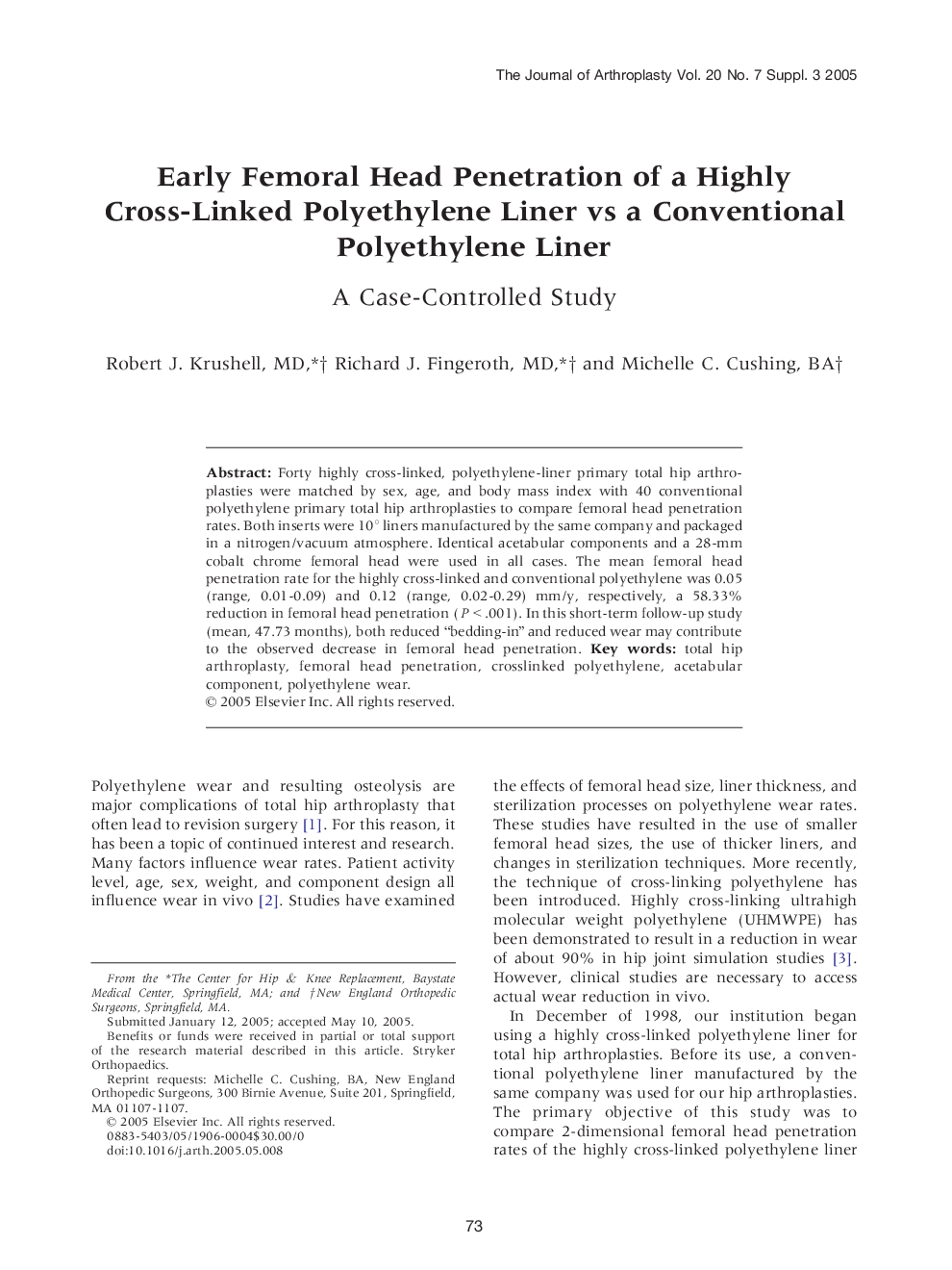| Article ID | Journal | Published Year | Pages | File Type |
|---|---|---|---|---|
| 10081934 | The Journal of Arthroplasty | 2005 | 4 Pages |
Abstract
Forty highly cross-linked, polyethylene-liner primary total hip arthroplasties were matched by sex, age, and body mass index with 40 conventional polyethylene primary total hip arthroplasties to compare femoral head penetration rates. Both inserts were 10° liners manufactured by the same company and packaged in a nitrogen/vacuum atmosphere. Identical acetabular components and a 28-mm cobalt chrome femoral head were used in all cases. The mean femoral head penetration rate for the highly cross-linked and conventional polyethylene was 0.05 (range, 0.01-0.09) and 0.12 (range, 0.02-0.29) mm/y, respectively, a 58.33% reduction in femoral head penetration (P < .001). In this short-term follow-up study (mean, 47.73 months), both reduced “bedding-in” and reduced wear may contribute to the observed decrease in femoral head penetration.
Keywords
Related Topics
Health Sciences
Medicine and Dentistry
Orthopedics, Sports Medicine and Rehabilitation
Authors
Robert J. MD, Richard J. MD, Michelle C. BA,
